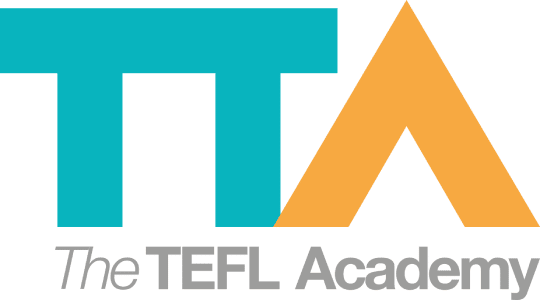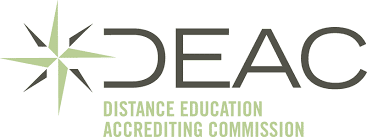The New Kid On The Block: Universal Design For Learning
Join a global community of over 200,000 TEFL teachers working throughout the world! Enrol me!
With so many different teaching techniques and methods evolving all the time in the field of teaching English as a Foreign Language, it can be difficult to keep up. This is why we’re here: to save you precious time and keep you updated on everything you need to know about TEFL.
Read more: 3 Teaching Methods for the EFL Classroom
You might have heard about Dogme, Grammar-Translation, the Audio-lingual Method, the Silent Way, Suggestopedia or any of the other MANY methods and techniques which have been utilised in the EFL classroom over the decades, but you might not know about a relatively new one.
This is why we want to introduce you today to Universal Design for Learning.
What is Universal Design for Learning?
Universal Design for Learning is otherwise known as UDL. It is an approach to teaching with the goal of meeting the different needs of the different learners in your classroom. Contrary to what its name implies, it doesn’t involve one teaching method for all learners, but rather many methods to cater for the different learning needs of all students. Its aim is to make learning accessible for all types of learners by removing any barriers to learning. It’s a flexible approach that helps all learners, including those with learning or attention disorders.
In our daily lives, we already incorporate many elements of universal design in order to help people with disabilities. Closed captions and automatic doors are just two examples of universal design in our daily lives. When you think about it, those very things are helpful to all of us, even if we have no disability. So while UDL benefits learners with disabilities, it can also be extremely helpful to other learners, as it provides different ways of scaffolding learning.
As you can imagine, this approach to learning and teaching is attractive to teachers from all different disciplines and subjects. Because TEFL teachers teach such a wide variety of learners, it is attractive to us, too. And interestingly, the techniques we use in the EFL classroom are generally applicable to all different ages and nationalities, which is why it’s a good idea to incorporate UDL into our classrooms.
There are a few simple techniques you can use to incorporate a UDL approach into your teaching.

Clarify the goals of the lesson
This means identifying the goals of the lesson and making them clear for your learners. The best way to do this is simply by telling them what the goals of the lesson are. Even better, write these goals on the board so that the students are aware of what is expected of them for the lesson.
Have a flexible classroom
Every learner learns differently. Some students need total silence to learn, others need to talk. Some learners need to figure things out on their own, while others prefer to work in groups. The UDL classroom caters for this by allowing for different learning environments. Once given a task, a learner can choose to sit at a group table, or sit by themselves with headphones to drown out the noise – or any number of different learning situations possible in the classroom. They can also choose to work with just one partner or in a group; the layout of the classroom will cater for these different needs.
Read more: 3 Easy Ways to Maximise Classroom Management
Use a variety of texts and materials
We all know we shouldn’t be chained to our coursebooks and this is just another reason for that. Coursebooks are primarily visual, but many learners learn better through auditory or kinaesthetic methods. This is why it’s important to include a variety of texts and materials in your lessons, from written texts and audio texts to videos and experiential, practical learning.
Read more: The Case For and Against Coursebooks
Offer assignment options
There are a number of ways we can assess our students’ learning. Again, different learners may prefer different ways of producing the language. If you need to assess whether they have learnt the present perfect adequately, let your learners choose if they want to talk about a past experience, or write an essay or maybe even record a voicenote or video. All of these options will allow you to determine whether or not your learners have incorporated this particular language structure into their language adequately or if they need more time to work on it.
Give regular feedback
Students need to be given regular feedback on their progress. This should be done on an individual basis so the feedback is personalised and focussed. Be specific and give concrete examples of ways the students can improve further.

Universal Design for Learning and the EFL classroom
If you have experience in the EFL classroom, then you would have realised that the EFL classroom already naturally incorporates aspects of UDL. Our classrooms are naturally more student-centred than teacher-centred (as in a traditional classroom). This is TEFL 101!
Read more: How Can I Make My Classroom More Learner-centred?
However, as with any new method or technique which is introduced to the classroom, there is definitely something we can take away from UDL. In the EFL classroom, it wouldn’t do any harm to be more mindful of the principles of UDL to make our lessons as accessible as possible.
Accreditation & Quality Assurance
The TEFL Academy was the world’s first TEFL course provider to receive official recognition from government regulated awarding bodies in both the USA and UK. This means when you graduate you’ll hold a globally recognised Level 3 (120hr) Certificate or Level 5 (168hr) Diploma, meaning you can find work anywhere and apply for jobs immediately.
 United Kingdom
UK
United Kingdom
UK












